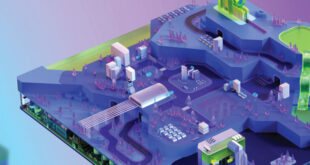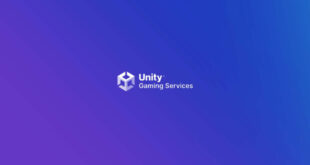Last month, Unity unveiled the long-awaited and highly anticipated fourth iteration of its popular games engine.
Including a wealth of new features for both triple-A developers and small studios, Unity 4 brings with a high-end character animation system named Mecanin, DirectX 11 support and the addition of Adobe Flash and Linux as new publishing platforms.
Develop spoke to Unity CEO David Helgason and CTO Joachim Ante about what Unity 4 means for the middleware outfit and its users.
You’ve said before that with Unity you are looking to level the playing field between the small and big studios, could you elaborate a bit on what that means?
David Helgason: In some ways, its kind of what we’ve been doing for many years. We’ve pushed really hard to bring all the very, very complicated technology to as many people as possible.
In the last year-and-a-half, we’ve really improved, what we call, the triple-A push, which is about really bringing as high a technology to today’s game developers as we can and take that very selectively so as not to spread ourselves too thin. So taking things like DirectX 11, which is now really relevant on modern PC hardware.
We’ve done a lot of virtual optimisations on mobile to make sure that we can really bring out extremely high-end games on mobile. With things like Mecanim, which is a next-gen animation framework and is also taking extremely high-end abilities, you can have 500 characters on screen with full animation that is an order of magnitude more than any other middleware out there including what is traditionally known as the triple-A stuff.
You can also combine that with workflows that allow you to take stock animation or easily take mo-cap data and apply it to characters.
Joachim Ante: In Mecanim there are a lot of very unique things. One thing that is making a big difference is the animation retargeting. In Mecanim, all animation can be retargeted onto any other character and we use a concept called muscle space and muscle clip animation footage.
Essentially, you set up all your animations once and then characters that are in similar shapes can just reuse those animations. That’s traditionally something that is a very big problem.
This can solve two problems. One of them is that we can put a lot of content onto the Asset Store where we can basically make huge mo-cap libraries available to people who previously didn’t have any access to mo-cap data because you would have to go through a lot of complex processes to get them into your game.
The unique thing we can do is make it possible to really put high-end character animation into the hands of people who previously couldn’t really use it effectively.
Helgason: It’s a beautiful example of a triple-A Unity feature, which is combining the super high-end with efficiency and simplicity. It’s the first major release we’ve done in two years, but actually if you look back, 3.2 was big and 2.5 was massive.
We’re a company that doesn’t go into the lab for ten years and build something ourselves, we just integrate it because we want our stuff to be accessed as immediately as possible.
Unity 4 has been announced and we’re showing what’s in there. But of course there’s the deep pipeline of the stuff that we’re always working on.
Developers appreciate it and now there’s hundreds of thousands, or actually over a million developers who have been with us over the last few years and it really turns out they appreciate this kind of interesting approach and just getting access to the new technology as it becomes available.
Why has there been a focus on high-end graphics and animation? Why has that been identified as important to Unity?
Helgason: We have an extremely flexible toolset and every time we visit the studios using Unity we find that they create their own workloads and extensions and the community shares these with each other so I think we already have, by a very long shot, the most accessible and flexible toolset.
We wanted to make sure that people could make any quality game they wanted and these new features speak to that.
How do you see Unity 4 impacting the way developers work?
Helgason: Not that much because we’re a company that really thinks highly of backwards compatibility and making sure that things are really robust. The workflows that people have created for themselves in the last few years will keep working. So, it’s not too much about changing how you work but just about giving you more features and more flexibility.
We have a number of features that improve the workload. If you look at Mecanim and the response we got at GDC, we’ve been talking a lot to the studios that have been doing triple-A animation-centric games and when they see Mecanim, their jaws just drop to the floor because there’s a lot of technology in there that has never been seen before.
This is a team that has been doing character animation for 20 years and they’re definitely the most experienced team in the old-world to do character animation.
As one example, usually when you import an animation clip or mo-cap data into your game engine, what happens is that you go through Motion Builder and you process your data, you clip it into little pieces and so on.
This process, depending on how you set up your pipeline, takes an animator around two hours to go through.
In some cases, pipelines are set up in batched ways where basically the programmer or the designer sends something off and then two weeks later the animation clip comes back and they can use it. But with Mecanim and Unity, you can do this whole process in around one minute.
All the little things that you need, all the important stuff you keep on doing again and again are so streamlined that it’s only a couple of buttons. It makes everything lighter. It’s an insane improvement that we’re just focusing on because a lot of time is spent on repetitive tasks.
What impact do you expect Unity 4 to have on the Asset store?
Helgason: The Asset Store already has a vibrant community with over a hundred thousand customers and lots of people making lots of money from it, but of course more importantly sharing title extensions and new pieces of workflows, libraries, art assets, shaders and everything you need so that’s a wonderful thing.
With 4.0, it’ll be much more relevant to sell animation there so we are working on making sure there is a lot of animation data. Once it’s live, we expect animators and mo-cap studios and so on to come and sell their data so that’s kind of a big thing in our world.
That’s the second time mo-cap has been mentioned so it really sounds like that is a core focus.
Helgason: It’s important that Unity can take the mo-cap data but what’s also extremely exciting out there is that now people are doing mo-cap with four Kinect cameras instead of professional grade mo-cap.
You can create all the technology in the world but if the pipeline out there and what people are able to create doesn’t really fit with it, it doesn’t really help. It’s really high time that Unity can do that so the timing couldn’t be better.
What about Unity’s plans, aside from Unity 4, how is the company evolving and changing over the next 12 months or so?
Helgason: We work in a very conservative company. We’ve innovated workflows, the engine and things like Mecanim and we’ve got the Asset Store and are helping people get their games to market with Union.
But frankly, behind that we are very conservative so we think that the engine and developers are the most important. Our primary and only goal is to support the developers to be successful and that includes big publishers like Electronic Arts, but also includes any sized studio, individuals and students.
You’ve heard the people and we’re very dedicated to that singular goal. We don’t want to change. We’ve got 200 people now and with offices on all continents.
Actually, that’s not true, not Africa, not Antarctica. We’ve opened up a lot of activity in Asia with our offices in Korea, Japan and China now, so that’s so we could be closer to the developers there but it doesn’t change our focus or change what we are trying to do. We’ve done some interesting things.
If you think broadly about what it means to really make developers more successful, they’ve got to have awesome tools, they’ve got to have the ability to work with the pipeline they want to work with, but it also means things like being able to get fed into the market.
One of the big things that we’re always doing of course is Flash exports so you could build different games, you can build a native for iOS and Android, you can build a native for the three current-gen consoles, you can build for PC and Mac, you can build it for our web player which has the distribution of 120/130 million currently but does 240 million more in China where we’re a cheap browser.
Soon we’ll have close to 400 million playing. But beyond that, there’s a plug-in that’s even bigger than ours, Flash. Adobe has over a million followers and over a billion browser users so we’ve been waiting for the last year and a half on making that work.
We’re currently on open Beta and we’ll be releasing that in a more formal way soon and that’s another way of getting developers to create their own games and getting them out to gamers more efficiently. But there are many more things that’s for sure
Flash deployment was part of 3.5 but is also an important part of 4 so how does 4 change things in terms of Flash?
Helgason: It’s been in an open beta so it’s a 3D release and we’ve had hundreds of thousands of people use that. There was a game contest around Christmas where 500 games were developed in a couple of weeks so it’s already fairly robust. But again it’s up to the protocol phase and actually released formally where we say its robust. Now you can do pretty much anything with it so that’ll be a big step for us.

 MCV/DEVELOP News, events, research and jobs from the games industry
MCV/DEVELOP News, events, research and jobs from the games industry



